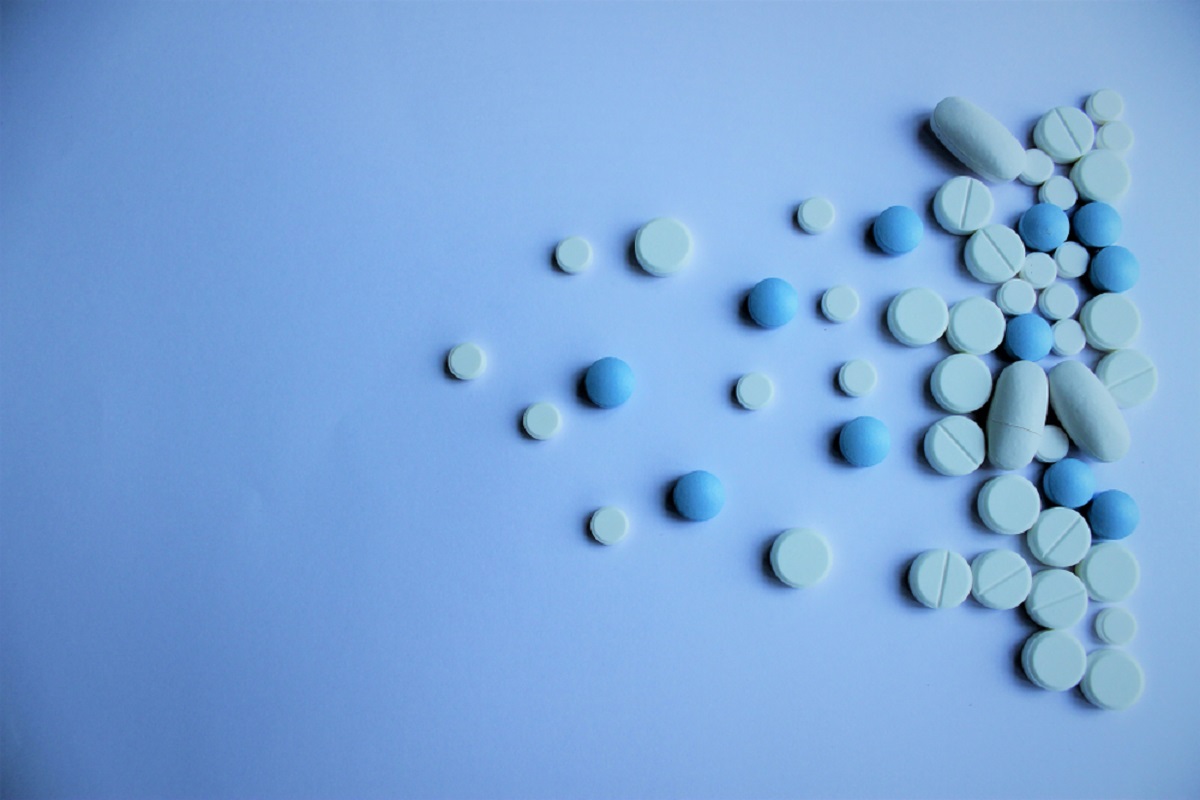
30 Apr What is the Dsuvia Drug?
Table of Content
The United States is in the throes of a deadly opioid crisis. Every day, 130 Americans die from an opioid overdose, and it’s in this context that the US Food and Drug Administration (FDA) has approved yet another opioid for medical use—the Dsuvia drug, produced by California-based AcelRX Pharmaceuticals—which, according to ABC News, is “five to 10 times stronger than fentanyl… and 500 to 1000 times more powerful than morphine.”
Understandably, reports that the drug was approved by the FDA in a 10-to-3 vote unleashed a whirlwind of controversy. Advocates have argued that the drug will be helpful in battlefield applications, as an aid to wounded soldiers incapable of receiving intravenous treatment. On the other hand, critics have argued that the drug will exacerbate the opioid crisis and lead to countless deaths.
So, what exactly is Dsuvia? More broadly, what are opioids and how bad is the epidemic? We’ll answer these questions and more below.
Opioids
There are times when over-the-counter pain relievers just aren’t strong enough. For patients dealing with chronic aches and pains, for those struggling with terminal cancer, or for people who are dealing with post operation pain, doctors will prescribe opioids; powerful, prescription painkillers.
The term “opioid” is not a specific drug; it’s an umbrella term that covers many different substances you may have heard of, including:
- Morphine
- Oxycodone
- Hydrocodone
- Codeine
- Fentanyl
When used in a medical context, these prescribed drugs can be incredibly helpful. They offer relief to patients who are struggling with difficult, chronic, and debilitating pain. However, because they produce a powerful euphoric effect, they are also prime candidates for abuse.
How Do They Work?
Our bodies are filled with opioid receptors which are attached to nerve cells throughout the body: in the brain, the gut, the spine and elsewhere. These nerve cells are responsible for our experience of pain.
Adaptively, pain is a necessary feeling. It’s how our body alerts us of injuries, and it’s how we know, for example, that we shouldn’t touch a hot stove with our bare hands. Generally, the threat of pain keeps us safe from physical harm and warns us of internal “problems.” However, chronic pain is debilitating, and acute pain can be overwhelming.
After ingesting an opioid, the drug attaches to opioid receptors and blocks the message that the body is experiencing pain.
Effects of Opioids
Opioids are powerful painkillers that come with serious side effects. Generally speaking, the amount of the drug consumed is correlated to the intensity of the effect produced, but because every genotype is different it’s hard to predict exactly how someone will react to an opioid.
Some of the primary short-term effects of opioid consumption include:
- Pain relief
- Euphoric feelings
- Constipation
- Intense sleepiness, drowsiness, and/or sedation
- Nausea which may be accompanied by bouts of vomiting
However, if too much of the drug is administered or consumed by a patient, several other side effects may start to surface. These should be taken seriously, as they may be indicators that the body is overwhelmed by the drug.
- Shallow breathing: If a user or patient is incapable of taking deep breaths, or if the rhythm of their breathing has slowed significantly, that should be taken as a sign that overdose is occurring.
- Reduced heart rate: If a user’s heart rate has suddenly decreased, or if his or her heart is beating at a much slower rate than normal, that should raise immediate alarm.
- Loss of Consciousness: While opioids will inevitably induce drowsiness, loss of consciousness is never a positive sign.
If abused—or even used with discretion to treat pain in the long-term—opioids can begin to affect bodily functions in harmful, permanent ways. Some of the most common effects of long-term abuse include:
- Dependency and tolerance: Over time, users of opioids require a higher dosage to feel the same effects, suggesting a tolerance. If the user or patient discontinues opioid use and begins to feel the symptoms of withdrawal, that suggests a dependency.
- Hypoxia: Hypoxia is a condition where not enough oxygen is found in the bloodstream. Many opioid users experience hypoxia leading to brain damage as a result of respiratory depression.
- Distention and bloating of the abdomen
- Liver damage
What is Dsuvia?
While the Dsuvia drug falls under the same general umbrella of opioids as Morphine and Fentanyl—which are both potent in their own right—Dsuvia is much stronger than both. In fact, tests have concluded that the drug is five to 10 times stronger than Fentanyl, one of the drugs which has contributed to the opioid epidemic. Because this medication is said to be stronger than the other opioid drugs, Dsuvia already poses a threat to the potential physical dependence of opioid abuse that may be more lethal altogether.
As far as characteristics go, Dsuvia is:
- Sublingual: Sublingual drugs are meant to be dissolved under the tongue.
- Designed to Manage Acute Pain: One of its purported purposes is for soldiers who have experienced wounds on the battlefield. In these cases, the relief offered by Morphine is often not enough to dull the pain.
- Packed in a Single-Dose Applicator: Dsuvia is packaged as 30 mcg doses that are dispensed via a single-dose applicator.
It’s also worth noting that Dsuvia is the most potent opioid drug released in the U.S. since 1984.
How Will Dsuvia Be Used?
At least on paper, use of the Dsuvia painkiller will be restricted to very specific cases.
- Dsuvia’s main application will be for individuals who have failed to respond to other painkillers, and for those who require a more potent form of pain management for acute pain.
In an interview with ABC news, Pamela Palmer, the chief medical officer of AcelRx, explained why they developed Dsuvia and how they intended it to be applied:
- “For acute pain management in a hospital, there hasn’t been a new opioid developed in many, many years. Right now, if you broke your femur and went into an emergency room, you would either have to be stuck with a needle or they would give you an oral pill that you would swallow and kind of wait for it to kick in, which could take up to an hour.”
The company has also suggested that because Dsuvia is administered in single-use form, it will help reduce complications that occur during the administration of liquid opioid formulations, which can be difficult to measure. Although these new prescription opioids have FDA approval, they will not be available in retail pharmacies for outpatient use. It is said that the Dsuvia tablet will instead be administered in a medically supervised setting. The goal for doing this is to help prevent overdose situations and prevent opioid overdose deaths senn within the opioid epidemic currently happening.
The Dsuvia Controversy
No one is disputing the fact that the country is in the midst of a serious opioid crisis, and that a large contributor to the crisis is the fact that many prescription drugs have ended up in the hands of individuals who were not prescribed them.
The fear is that Dsuvia, an extremely potent drug that, if abused, could prove incredibly lethal, will only exacerbate the current opioid crisis.
The Critics
Since the FDA approved the use of Dsuvia with a 10-3 vote, a number of high-profile critics have stepped forward to renounce the decision.
Among them is the FDA’s own Dr. Raeford Brown, who serves as the chair of the FDA’s advisory committee on analgesics and anesthetic drug products.
In an interview with ABC News, Brown commented that, “It doesn’t seem reasonable to place another potent opioid on the market at this time, especially when we’re currently still writing 200 million prescriptions for opioids a year. The need to put a drug like this on the market is not demonstrated. The ability to manage that drug once it gets past the FDA is not demonstrated.”
Brown’s criticism has been complicated by the fact that, prior to the FDA’s vote, the organization withdrew invitations that had been extended to several voting members of the drug safety advisory committee. The move, understandably, raised eyebrows.
Dr. Sidney Wolfe, who founded the nonprofit Public Citizen’s Health Research Group, wrote in a press release that, “It is certain the Dsuvia will worsen the opioid epidemic and kill people needlessly.”
The Advocates
Despite the fervency of critics, there have been a number of staunch supporters of Dsuvia, including FDA Commissioner Dr. Scott Gottlieb. While he hasn’t commented on the friction within the organization, he has acknowledged the criticisms while still defending the drug’s “unique aspects.”
In December, his defense of the drug went even further, as he attempted to describe the ways in which it will be regulated above and beyond the way previous opioids have been. He was quoted saying:
- “We’ve learned much from the harmful impact that other oral opioid products can have in the context of the opioid crisis. We’ve applied those hard lessons as part of the steps we’re taking to address safety concerns for Dsuvia, including requiring a Risk Evaluation and Mitigation Strategy (REMS) to accompany this drug. The REMS reflect the potential risks associated with this product and will tightly control its distribution and use.”
Whether the organization follows through with these promises remains to be unseen.
Opioid Safety Tips
Even though synthetic opioids are easily abused, they are still incredibly valuable in medical contexts. Without the use of opioids, pain that might otherwise derail an individual’s life can become manageable. If you or someone you know has been prescribed opioids, understanding how to use them properly is key to mitigating the risk of abuse.
It’s recommended that you:
- Discuss the drug extensively with your physicians
- Pay careful attention to side effects
- Heed instructions and warning labels
Discuss the Drug Extensively with Your Physician
In the course of a day, physicians will attend to numerous patients, many of whom place implicit faith in the physician’s ability to impart all of the necessary information related to drug dosage before scribbling a prescription.
Before accepting a prescription, make sure you’ve had a lengthy discussion with your physicians about all of the potential long-term effects of opioids, how to administer doses correctly, and how long you should be taking the drug. It’s also wise to consider trying less potent pain relievers before settling on a powerful opioid.
Also, if you have a history of drug abuse or addiction, it’s important to mention that to your physician.
Pay Careful Attention to Side Effects and Adverse Reactions
Because synthetic opioids are so powerful even when a standard dosage is taken, it may be hard to initially distinguish between “the right amount” and “too much.” If side effects like shallow breathing start to occur, they should be regarded as a warning sign. The same goes for depressed heart rate.
If you feel like you or someone you know may have taken too much of an opioid, contact 911 as soon as possible.
Heed Instructions and Warning Labels
In many cases, patients who are experiencing severe pain will be tempted to take more than the prescribed dosage of a given opioid. This is always a bad idea.
When a doctor prescribes a given amount of an opioid, the prescription is written while considering all of the details you’ve already furnished about your pain. The prescription is tailored to specifically manage your pain, and if you’ve taken more than the suggested amount you run the risk of overdose.
Helping Someone with Opioid Addiction
Watching someone struggle with an opioid addiction is difficult, but there are steps that a loved one can take to help. However you decide to approach the loved one—either through a one-on-one conversation or through an intervention—remember that it’s important to channel love and patience instead of adopting an accusatory stance. Remember that addiction is an illness, not a moral failing.
If through an intervention or an effective one-on-one conversation, you’ve convinced your loved one to enter a treatment facility, the next step is picking the right type of addiction treatment. The selection should be based on the intensity of your loved one’s addiction, the cost of the program, and the services offered.
Final Thoughts on Dsuvia
This story will end one of two ways. Dsuvia either seems poised to contribute to the opioid epidemic, or it will become an incredibly useful drug in a physician’s arsenal used to combat acute pain. Now that this synthetic opioid officially has FDA approval for medical purposes, only time will tell how it will affect our society as a whole.
In the meantime, the opioid epidemic in Georgia and across the United States rages on. If you or someone you know is affected by the crisis, it’s vital to seek out treatment. The consequences of waiting may be dire. For more information on Georgia drug rehab programs, contact our rehab center today or visit our website.
Sources:
Is There Really a Need for Another Opioid? (n.d.). Retrieved April 14, 2019, from https://health.usnews.com/health-care/patient-advice/articles/2018-12-13/dsuvia-the-newest-opioid-raises-safety-questions
Jackson, A. (2018, October 13). What is Dsuvia? Retrieved April 12, 2019, from https://abcnews.go.com/Health/dsuvia-opioid-painkiller/story?id=58875487
Staff, F.E. (2019, February 26). Opioid Addiction: Signs & Treatment. Retrieved April 12, 2019, from https://familydoctor.org/condition/opioid-addiction/






No Comments